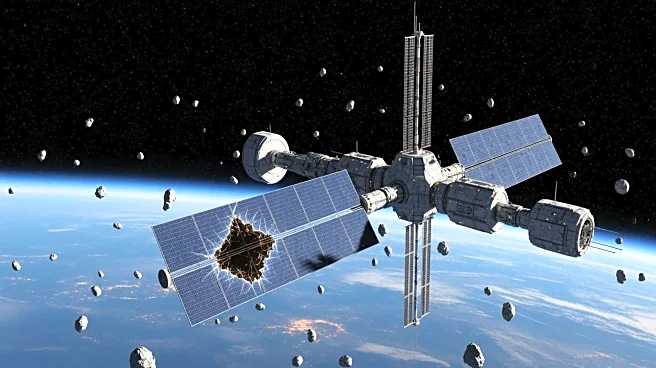What's Happening?
China is preparing to launch the Shenzhou-22 spacecraft to its Tiangong space station ahead of schedule, following damage to the Shenzhou-20 spacecraft. The Shenzhou-20 mission experienced a setback when
the spacecraft was damaged while docked, forcing its crew to extend their stay. The Shenzhou-20 crew successfully returned to Earth aboard the Shenzhou-21 spacecraft, leaving the newly arrived astronauts without an emergency return vessel. To address this security risk, China is sending Shenzhou-22 six months earlier than planned, carrying provisions and equipment for the space station. The Tiangong station can temporarily host six crew members, but is designed for three astronauts for six months.
Why It's Important?
The expedited launch of Shenzhou-22 underscores China's commitment to maintaining the operational integrity of its space program. The incident highlights the challenges of managing space missions and the importance of contingency planning. By sending Shenzhou-22 ahead of schedule, China ensures the safety and continuity of its manned space operations, demonstrating resilience and adaptability. The situation also emphasizes the risks posed by space debris, prompting considerations for improved safety measures in space exploration. China's proactive response reflects its strategic focus on advancing its space capabilities and maintaining a permanent presence in orbit.
What's Next?
China's space agency will continue to monitor the situation and assess the damage to Shenzhou-20, potentially deorbiting the vessel over the Pacific. The Shenzhou-21 crew is expected to return to Earth around April 2026, completing their half-year mission. The launch of Shenzhou-22 will provide necessary supplies and equipment to support ongoing operations at the Tiangong station. As China advances its space program, further developments in spacecraft technology and safety protocols are anticipated, contributing to the country's long-term goals in space exploration.













